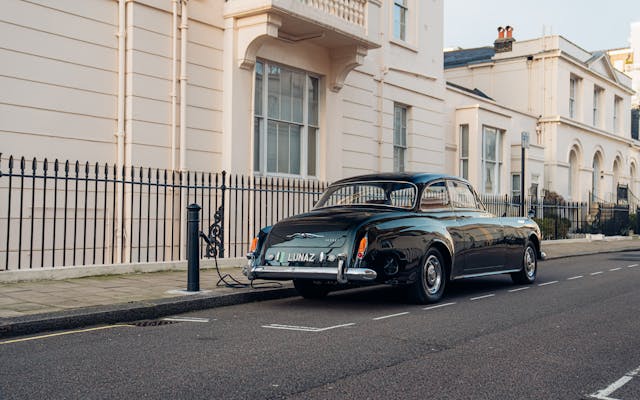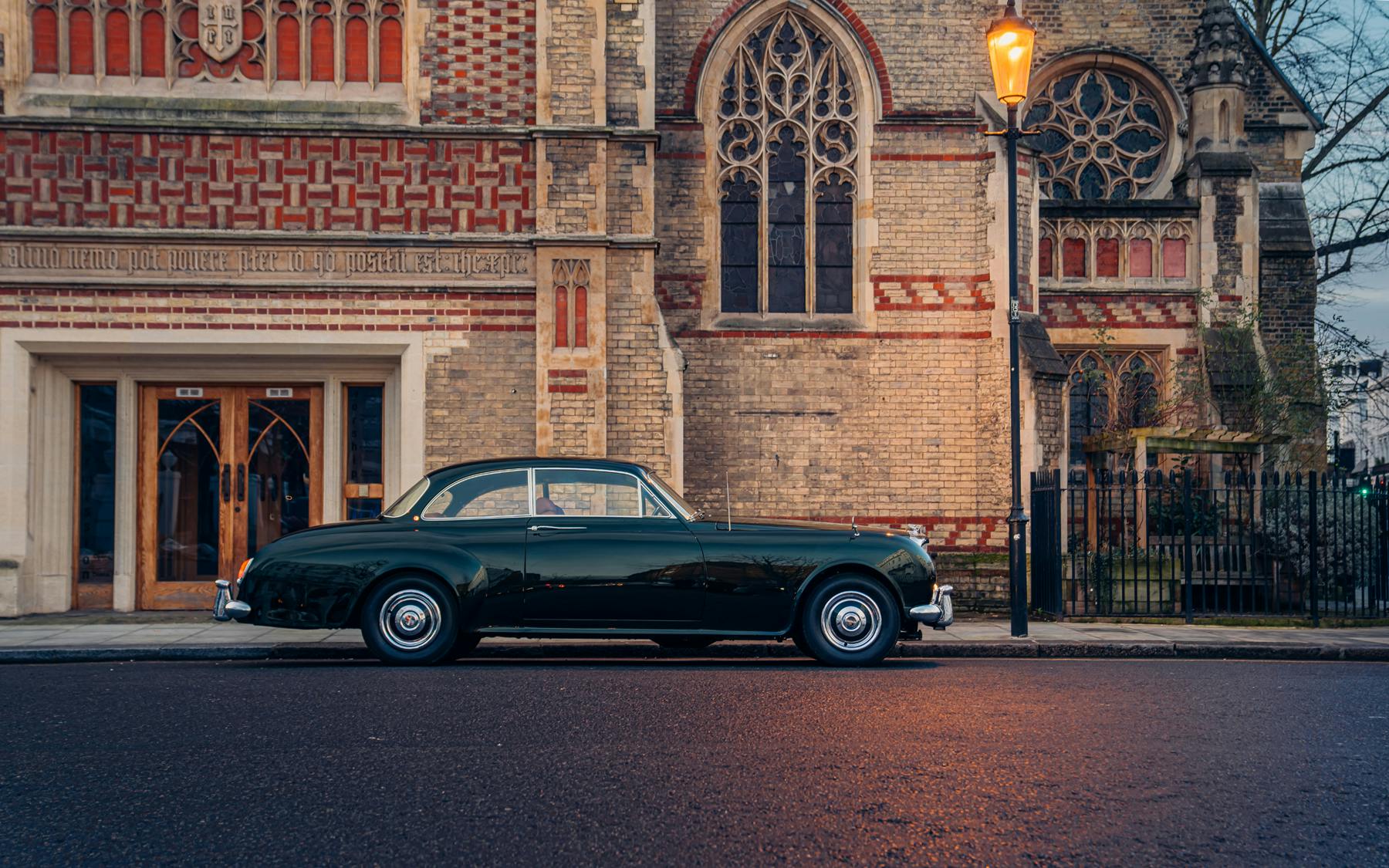Rare, vintage Bentley converted to battery power
A 1961 Bentley S2 Continental has been stripped of its original, 6.2-liter V-8 engine and “upcycled” with a fully electric powertrain.
This Bentley is one of just four 1961 Continentals dressed in sheetmetal designed by London coachbuilder James Young. Until now, it lived a globe-trotting life in Germany and Japan, before being returned to the UK to become “the world’s rarest upcycled electric vehicle.”
British company Lunaz is responsible for the high-end, high-voltage conversion, which also included a bare-metal restoration of the vehicle and the addition of a host of modern features.
During the process, the all-alloy internal-combustion engine, the transmission, and all its ancillaries were removed and the fluids drained for recycling. In their place is Lunaz’s 250-mile electric powertrain. With 405 horsepower and 530 lb-ft of torque, the battery-powered Bentley is twice as powerful as it used to be.
Since the Bentley is now capable of reaching 62 mph from rest in a roguish 6.9 seconds, Silverstone-based Lunaz wisely upgraded the brakes from drums to discs all round, with six-piston calipers at the front and four-piston units at the rear. The suspension now utilizes electronically adjustable coil-springs with lever-arm dampers which can be set from the inside the cabin.
The interior has also had a makeover, and, in keeping with the car’s claimed environmental credentials, the materials used are sustainable. The hides for the leather seats were tanned using olive leaves that had naturally fallen from their trees, and the carpet is woven from regenerated nylon fibers and has a backing made from recycled plastic bottles. The wood veneers are from Forestry Stewardship Council–approved sources.
“This magnificent Bentley S2 Continental was already an exceptional motor car, as one of just a few examples of its type that remain in the world,” explains Lunaz founder David Lorenz.
“In its new guise, it’s the rarest vehicle ever to be converted to fully electric propulsion, and the most exclusive project we’ve ever undertaken at Lunaz Design: It’s literally one of a kind. This car is also a further demonstration of our proven upcycling process and technologies, developed entirely in-house at our Silverstone facility, which are fast becoming the de facto gold standard for electrification projects involving the world’s most prestigious marques.”
There’s no denying the craftsmanship or ingenuity in this now-million-dollar machine. (Hagerty values an unmodified, Young-bodied ’61 Continental around $300,000.) However, Lunaz hasn’t revealed the condition of the Bentley when it arrived, so we don’t know if this exercise was more of a real rescue mission or a virtue-signaling vanity project.
Either way, it’s hard to imagine that the environmental damage of a rarely used classic built 60 years ago would be any worse than the cost of new materials and labor that have gone into the conversion.
Check out the Hagerty Media homepage so you don’t miss a single story, or better yet, bookmark it.











My first thought is that this is very cool. A luxury car like a Bentley is a good application for an electric drivetrain because the car is heavy, not taken on road trips, and smoothness and silence are valued above other considerations. My second thought is that it’s never going to be driven, or driven so few miles it’s going to be important to remember to keep the battery charged for fear of bricking it. Batteries experience calendar aging too – merely not driving it will not extend its life indefinitely. In that regard it’s a waste. And please stop with all the “sustainable” nonsense. Just say “recycled”. The wood for the interior either came from old growth, a tree farm or was recycled – be honest.
Ah, but carbon reduction was not the point, was it?
SS
What a waste!
I find the EV plant here less than adequate.
This is a 100% attention seeking project. As far as what it actually accomplishes… well nothing.
EV upcycling is well out of reach of the average consumer, and it’s the daily commuter fleet that needs that done (if we are going along with all the surface-presented EV-is-better math) not a vehicle that will likely get less than 200 miles put on it a year even if it is doing a show circuit.
I do find it interesting this EV resto-mod viewpoint that is getting lots of attention here lately as it is pretty contrary to the “original is best” fussiness some stand hard behind.
The money spent on this car could have done a lot more good locally just donating that cash to public transit or the local children’s club that plants trees. If it was LS swapped with twin turbos I wouldn’t be saying that because it wouldn’t be posing as an eco-statement hero.
As long as they kept the original powertrain to be swapped back in, it’s all good. At some point someone will realize the stupidity of all this…